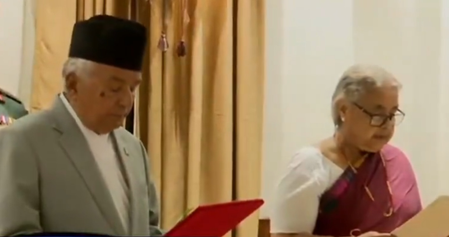
The government shutdown has suspended work for hundreds of thousands of government employees, but it didn’t halt the launch of a new telescope designed and built by the scientists at the University of Massachusetts Lowell.
The 1,500 pound telescope, designed to identify planets beyond the solar system, lifted off Wednesday morning in New Mexico, carried by a massive balloon that brought the device to the edge of the Earth’s atmosphere, where it took photos of possible planetary systems around nearby stars.
The launch would have been put on hold indefinitely had it not been for a last-minute exemption that allowed NASA scientists to work one day past the government shutdown, said Christopher Mendillo, an engineering professor at UMass Lowell who oversaw the launch.
“We showed up here at one in the morning to start working, and the government shut down an hour before that,” Mendillo said in a phone interview Thursday. “We got an official exemption for one day to continue our work here.”
Without the dispensation, Mendillo said, NASA management and safety officers at the launch site in Fort Sumner, New Mexico, would have been immediately furloughed, leaving the telescope’s launch in limbo.
Advertisement
“Those are the people where, if NASA told them to stop working, we wouldn’t be able to launch,” he said.
The federal government’s Wednesday shutdown preceded large-scale furloughs among employees of numerous government agencies, including NASA, which sent home more than 15,000 workers, or roughly 80 percent of its workforce.
With both Democrats and Republicans in the Senate seeming to settle in for a standoff over healthcare funding, the shutdown may last for weeks.
Advertisement
The telescope lifted off at 9:40 a.m. New Mexico time Wednesday and safely returned to earth 110 miles away in Texas at 6 a.m. Thursday, according to Mendillo and a press release issued by the university.
The telescope, engineered by professors and students at UMass Lowell in collaboration with NASA, carries a specialized imaging system that allows it to produce stable still images of objects in the vicinity of stars, normally difficult to see because of the star’s light, according to the university’s statement.
“We were trying to take images of dust rings to look for signs of planets, and also just to understand how these planetary systems form and evolve over time,” Mendillo said.
With tens of thousands of image to sift through, Mendillo said the university will be able to determine whether there are planets around the stars Fomalhaut and Vega in six months.
“We took some really cool pictures, some really exciting images,” Mendillo said. “A lot of them are going to take awhile to process and kind of understand what we’re looking at.”
Mendillo said that scientists can determine the presence of planets in dust clouds surrounding Fomalhaut and Vega by looking for areas where there isn’t dust – a tell-tale sign that a nearby planet’s gravitational field cleared the area.
“You would know, even though you can’t see the planet, that a planet was orbiting in that ring,” he said. “One of the definitions of a planet is it has to clear out its orbit.”
The mission is meant to serve as a staging ground for future missions with more powerful instruments that can take clear images of the planets.
Advertisement
“It’s a huge technical challenge, and it’s very hard to do from the ground the way that we’re doing it,” Mendillo said. “It’s eventually going to be a space mission that we’re kind of maturing the technology for.”
The project to build and fine-tune the telescope was funded by a $7 million grant from NASA’s Astrophysics Research and Analysis Program to UMass Lowell, according to the statement.
Dozens of students at UMass Lowell’s Center for Space Science and Technology helped build the telescope in what Mendillo described as a “pretty large collaboration.”
“Over the last decade, basically, we’ve been building and refining this telescope,” he said.
Truman Dickerson can be reached at truman.dickerson@globe.com.



